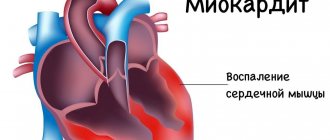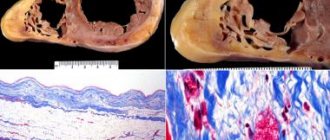- Types of dysplasia
- Degrees of dysplasia
- Diagnosis of the disease
- Treatment of dysplasia
- Recovery period
Dysplasia is a violation of the structure of body tissues, with a simplification of their structure, deformation of cells and their components. Congenital dysplasias caused by genetic causes, as a rule, have diverse manifestations, often multiple and in different systems.
Dysplasia of the mucous membranes has a local connection to a specific organ, such as the stomach, intestines, cervix. Unlike all other dysplasias, this type of pathology is not inherited and is not associated with a global genetic failure, but is caused by the vital activity of pathological microflora.
Types of dysplasia
Dysplasias are very diverse and heterogeneous, congenital and acquired dysplasias are essentially very different processes, some involve several systems, others only areas of the mucous membrane.
Congenital dysplasias are manifested by developmental anomalies - deviations in the structure that do not interfere with normal functioning, and developmental defects - these anomalies already disrupt the functioning of the anatomical region.
Mucosal dysplasia does not form defects or developmental anomalies, but can lead to malignant processes. Absolutely different manifestations of dysplasia do not allow creating a unified classification; each researcher of the problem offers his own systematization of heterogeneous pathology, not free from shortcomings.
Congenital dysplasias are formed in the prenatal period; clinical manifestations affect the integumentary tissues and the musculoskeletal system; their division is very conditional.
Dysplasia of the ectoderm is distinguished - the superficial tissue of the embryo from which the outer integument is formed: skin with nails and hair and the oral mucosa with teeth. Pathology can manifest itself at any age, in any set of symptoms and with any severity. This can only be dry skin with small spots of atrophy and an almost complete absence of teeth, or baldness with no nails and moon-shaped defects in the tooth enamel with a full set of teeth. It is also possible that there is simply a decrease in the number of sweat glands in the skin, which leads to rapid overheating already in infancy and the danger of sudden death.
The vast majority of those suffering from genetic connective tissue dysplasia may experience disorders of all body systems from minor to life-threatening and with any set of symptoms: neurological disorders, heart valve defects, skeletal changes, vascular aneurysms, softening of the tracheal rings, prolapse of the kidneys, and also leading to sudden death due to combined damage to the cardiovascular and respiratory systems. The most active surge in manifestations is observed in adolescence, when, for example, scoliosis and flat feet progress sharply, cardiac arrhythmia and myopia appear. Several syndromes with characteristic external manifestations have been formed, again with variable severity - from scanty individual manifestations to extremely pronounced ones with early death from complications, such as Marfan syndrome and osteogenesis imperfecta.
Joint dysplasia is manifested by congenital malformations of large - hip and knee, as well as small joints of the hand and foot, and in essence can be considered the same connective tissue dysplasia, but in a separate articular system. As a rule, the pathology is detected in infants, but in a minimal form it can go unnoticed, which is discovered during an examination for an accidental leg injury.
Fibrous dysplasia is indicated by single and multiple cysts in the bones. Some people live healthy lives into old age and learn about genetic pathology in the form of a small brush by chance during an X-ray for another reason. Others suffer from chronic pain and limb deformity, often with shortening, due to multiple cystic cavities in the bone tissue.
Dysplasia of the mucous membranes of internal organs is “earned” during life. In most cases, the process does not manifest symptoms or has uncharacteristic and unstable minimal signs, which are found by microscopy of a piece of tissue. Dysplasia can progress from mild, through moderate and severe, up to stage zero cancer - and this is its main danger. Severe dysplasia is difficult, and sometimes impossible, to reliably distinguish from non-invasive carcinoma in situ.
Gastric dysplasia can be clinically manifested by gastric pathology; the patient is often infected with Helicobacter. The pathology lies in the simplification of the cellular structure - decreased differentiation, changes in cell nuclei and other intracellular structures. Mild dysplasia not only turns into moderate, but also regresses; moderate dysplasia proceeds similarly, while severe dysplasia is considered a precancerous process and is subject to serious treatment and observation. Gastric dysplasia in frequency of occurrence is significantly inferior to metaplasia - the formation in the mucosa of areas of cells very similar to the cells of the large or small intestine. During microscopy, areas of intestinal metaplasia are always found around any dysplasia, and this is also a precancerous process.
Primary urothelial dysplasia is an uncommon pathology, manifested by symptoms of an irritable bladder with frequent and painful urge to urinate. This variant of dysplasia is not usually divided into degrees; the probability of developing cancer on a dysplastic background is slightly more than 15% and the transition to stage zero cancer will take from 4 to 8 years.
Cervical or dysplasia of the cervical mucosa is a very common pathology, since its leading cause is infection with the human papillomavirus.
The virus itself cannot be killed - it is resistant to any drugs, but it is fatal and in the vast majority of women it will heal on its own in the next two to three years.
Degrees of dysplasia
For every three women with mild dysplasia of the cervical mucosa, there is one patient with moderate and severe dysplasia. In nine out of ten women, the site of pathological changes in the mucous membrane is located at the transition of the squamous epithelium to the glandular epithelium, which is normally located at the beginning of the cervical canal, but due to childbirth and abortion it can move deeper into the canal closer to the uterine cavity.
Dysplasia is characterized by the appearance of irregular cells - atypical, but the intercellular structures do not suffer at all. Cells change their shape, their nuclei also change size, shape and color. The nuclei are larger, uneven with a thick outer shell, the intracellular fluid becomes lighter and increases in volume. Instead of absolutely identical epithelial cells, a complete cellular re-sorting appears, intensively dividing into the same defective specimens. The probability of developing cancer in this group of different-sized cells reaches 50%, although this will take many years.
The degrees of dysplasia or, according to the modern classification, emphasizing the possibility of progression to a malignant process, cervical intraepithelial neoplasia or CIN are graded as follows:
- Mild cervical dysplasia or CIN I - pathology is located in one third of the epithelial layer. Studies have shown that in two thirds of women, within three years from the moment of infection with human papillomavirus types 16 and 18 (HPV), the process will spontaneously resolve due to the natural death of the cell affected by the virus, which the virus does not have time to leave and is exfoliated along with its cellular “house”. In three out of ten infected women, HPV will continue to live, and in one it will develop into moderate dysplasia; however, mild dysplasia is not considered precancer.
- Moderate degree of cervical dysplasia or CIN II - the lesion covers more than half the thickness of the epithelium - up to two thirds. In three out of a hundred, such dysplasia progresses to severe over time.
- In severe cervical dysplasia or CIN III, only the surface of the epithelium remains free of atypical cells; visually, even in an electron microscope, this pathological condition is very similar to cancer in situ. It is assumed that every seventh woman diagnosed with CIN III already has malignant cells, however, in every third patient, severe dysplasia can become moderate or mild and even disappear. The problem is one thing - it is impossible to say who will have cervical cancer in the future and who will not get it.
The risk of cancer is real in a woman with long-standing cervical neoplasia, so even mild dysplasia that has not disappeared after 36 months of observation is operated on. By the way, HPV infection does not necessarily promise dysplasia; in every fourth infected woman, the virus does not penetrate the cells - it “sweeps” past to the exit of the genital tract.
Information about authors
Sonkin I.N., Candidate of Medical Sciences, Head of the Department of Vascular Surgery of the National Healthcare Institution "Road Clinical Hospital" of JSC "Russian Railways", St. Petersburg.
Shaydakov E.V., Doctor of Medical Sciences, Professor, Deputy Director for Scientific and Clinical Work of the Federal State Budgetary Institution "Research Institute of Experimental Medicine" of the North-Western Branch of the Russian Academy of Medical Sciences, St. Petersburg. Mikhailov V.V., Candidate of Medical Sciences, Associate Professor of the Department of Maxillofacial Surgery, North-Western State University named after I.I. Mechnikov. Remizov A.S., Candidate of Medical Sciences, Deputy Chief Physician for Surgery of the National Healthcare Institution "Road Clinical Hospital" of JSC "Russian Railways", St. Petersburg. Krylov D.V., surgeon, department of vascular surgery, National Health Institution "Road Clinical Hospital" of JSC "Russian Railways", St. Petersburg. Chernykh K.P., surgeon, department of vascular surgery, National Health Institution "Road Clinical Hospital" of JSC "Russian Railways", St. Petersburg. The article was received on May 24, 2013.
Diagnosis of the disease
Mucosal dysplasia does not hurt, does not interfere with life - it has no symptoms.
The simplest way to detect pathology of the cervical mucosa was invented by Papanicolaou in the 1940s and consisted of taking scrapings of surface cells . Today, modified instruments are used to collect more material. Examination of cells under a microscope - cytology allows us to determine the next diagnostic stage - colposcopy.
Extended colposcopy - examination of tissues under high magnification from five to 30 times, with additional enhancement of the “picture” with special solutions, which helps in choosing the optimal place for taking a piece of tissue - a biopsy of the area of dysplasia. Pieces of mucous membrane measuring at least 3 millimeters are sent for microscopy - histology. A biopsy is excluded in case of inflammation and infections, but only temporarily.
Further, with morphological confirmation of dysplasia the mucous membrane of the cervical canal is scraped to identify its changes; in a woman, dysplasia can be localized in the glandular crypts - the pits of the mucosa and the epithelial transition zone can move higher. Curettage visualizes the pathological substrate hidden from the eye.
Treatment of dysplasia
For congenital dysplasia, there is no radical treatment; for some life-threatening malformations, operations are performed, but all therapy is aimed only at reducing symptoms with increasing motor activity and is palliative in nature.
For joint dysplasia, effective but painful methods of multi-month fixation have been developed to create peace and provide time for development that did not happen in the prenatal period.
In case of gastric dysplasia, Helicobacter is eliminated, the diet is adjusted, the diet and lifestyle are modified towards normal, and medications are used to protect the mucous membrane from damage.
Treatment of cervical dysplasia depends on its severity: with mild dysplasia, conservative measures are resorted to. The human papillomavirus is resistant to drug effects, but its vital activity is supported by disorders of the mucous membrane during chronic inflammation, and contributes to a decrease in immunity due to hormonal disorders and systemic diseases.
It is easier for a healthy woman to get rid of HPV, but if she has diseases, it is necessary to help the body - to cure acute inflammation, transfer a chronic process into long-term remission, achieve hormonal balance, normalize sugar and other blood elements.
For long-term CIN I, which has been observed for almost 3 years without a tendency for the tissue to normalize its structure, surgery is also performed - the cervical sector is removed. The sector is similar to a geometric figure - a cone, hence the name of the operation - conization.
Moderate and severe dysplasia is treated only with surgery - conization of the cervix is performed using radio wave or laser methods. The operation is highly effective, leaves almost no scars and does not interfere with future pregnancy and childbearing.
Literature
- Mulliken JB Hemangioma sandvascular malformations in infants and children: A classification based on endothelial characteristics / JB Mulliken, J. Glowacki // Plast Reconst Surg. – 1982 Mar. – Vol. 69, N 3. – P. 412–420.
- Venous malformations (angiodysplasia) - the possibilities of modern methods of diagnosis and treatment / V. N. Dan [et al.] // Phlebology. – 2010. – T. 4, No. 2. – P. 42–48.
- Ethanol Sclerotherapy for the Management of Craniofacial Venous Malformations: the Interim Results / Ho Lee // Korean J Radiol. – 2009 May-Jun. – Vol. 10, N 3. – P. 269–76.
- Venous malformations of skeletal muscle / KD Hein // Plast Reconstr Surg. – 2002 Dec. – Vol. 110, N 7. – P. 1625–35.
- Ethanol sclerotherapy of venous malformations: evaluation of systemic ethanol contamination / FD Hammer // J Vase Interv Radiol. – 2001 May. – Vol. 12, N 5. – P. 595–600.
- Advanced management of venous malformation with ethanol sclerotherapy: mid-term results / BB Lee // J Vasc Surg. – 2003 Mar. – Vol. 37, N 3. – P. 533–38.
- Diagnosis and treatment of venous malformations. Consensus Document of the International Union of Phlebology / BB Lee [et al.] // Int Ang. – 2009 Dec. – Vol. 28, N 6. – P. 434–51.
- Sonographically guided percutaneous sclerosis using 1% polidocanol in the treatment of vascular malformations / R. Jain // J Clin Ultrasound. – 2002 Sep. – Vol. 30, N 7. – P. 416–23.
- Treatment of venous malformations with sclerosant in microfoam form / J Cabrera // Arch Dermatol. – 2003 Nov. – Vol. 139, N 11. – P. 1409–16.
- Percutaneous sclerotherapy of peripheral venous malformations in pediatric patients / F. Gulsen // Pediatr Surg Int. – 2011 Dec. – Vol. 27, N 12. – P. 1283–37.










